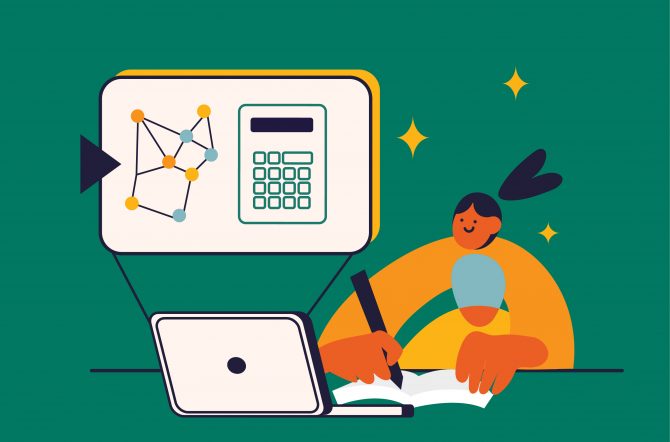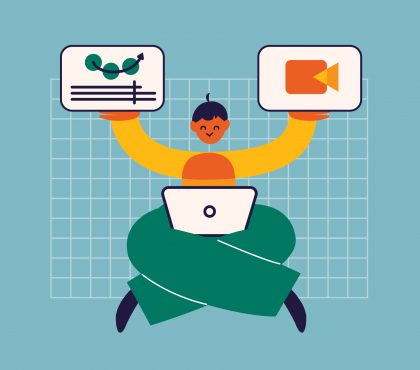Using animation for education can enhance cognitive function; increase attention and engage learners. For example, in natural science, educational animation can show the reaction of atoms. With social science, animation can show how “dry and complicated” economics theories work in daily activities. Math, Languages, Music, Art, etc – all subjects can be applied to animation for better study results. Wondering what these animations look like in practice? Here are some educational animation examples to give you inspiration.
- 1. Permaculture Design Online Course
- 2. Aviassist Drone Training Course
- 3. Math animations from Bar Model Company
- 4. Simple Nursing’s Training Program
- 5. Accounting Course at UNSW
- 6. Shin Shin Tang – Educational Animation about Mental Health
- 7. Foundation Medical – Educational Animation for Higher Students
- 8. Integrity and Values
- 9. Intelycare – Educational Animations about Fire Safety Training
- 10. PN Junction Explained
- 11. Sole Trader Animation – Business Law Training
- 12. Bid Ops – Process Training
- 13. Pro Cloud Architecture – Educational Animation for Internal Training
- 14. One QBE – Employee Management Training
- 15. Freight Snap – Educational Animation about Supply Chain Training
- How Long Should Educational Animation Be?
- How to Keep Your Audience Attentive?
- 6 Steps to Produce an Educational Animation Video
- Conclusion
1. Permaculture Design Online Course
Permaculture Design is a 12-week program specializing in the practical solutions to developing sustainable ecosystems. The course follows the MOOC structure, where most of the teaching materials are in video form. The instructor hence used talking-head videos to deliver the knowledge to his online students.
Animations are integrated into the course because of their amazing visualization ability, which helps explain the many complex concepts of permaculture. By following key educational animation principles, these animations serve not just as visual aids but as structured learning tools that guide students through concepts efficiently and engagingly.
As you can see in the video example, the animation plays more as a visual aid tool for his lesson than a narration video. Most animated videos in this course contain a little plot. The main purpose of the videos here is to bring still illustrations from books to life. While illustrations and diagrams can serve the same visualization process, they lack the dynamism that draws learners in, and they often require still more time and imagination from the part of the audience to fully explain these concepts. An animated video, on the other hand, lays the process down quickly and clearly, thereby helping students absorb information better.
2. Aviassist Drone Training Course
Aviassist conducts regular classes, both in practical RPAS training and in theory courses. This character animation e-learning example plays almost the same role as Permaculture’s — they act as visual aids demonstrating complicated concepts in training. The slight difference is that Aviassist’s drone training course uses some storytelling elements to walk the learners through the mechanical processes, while Permaculture’s animations are plain visualizations.
This video is one of the animated instructional video examples. This example shows the ability animation has to clearly present sophisticated systems such as those of these machines without boring the learners. Using relatable characters and circumstances, the animated video becomes that much more captivating to learners who see themselves in the video. It makes them take in learning objectives better. It’s hard not to conclude that storytelling is among the best features animation could add to eLearning.
3. Math animations from Bar Model Company
Bar Model Company uses visuals to teach math to children in primary and secondary schools all over England. The premise of this is simple: animators help educators illustrate math problems with bar models to help young learners grasp the abstract concepts of numbers and mathematical processes. From there, they’ll start to learn how to apply this understanding and solve problems.
Not only does this model make it easier for young minds to understand math, but it also makes the learning process more enjoyable and motivating. How? By thoughtfully using well-loved superhero and cartoon characters! These characters are relatable and appealing to the juniors, and they help turn the math problem into a story that pulls the audience in. And that’s everything you expect from the visual supporting aid of an online course, especially in this distracting, digital age.
4. Simple Nursing’s Training Program
If you think colorful animations are only for children, Simple Nursing’s online resources may change your mind. This platform provides pre-service resources for nurses who are studying to pass the NCLEX and other qualifications. Their aim is not only to be informative and helpful but also fun and engaging. After all, it’s much easier to make use of memorizing tips and tricks if you understand it well and find it entertaining to learn them.
Take a look at the video above — instead of simply speaking about all the different conditions and medications, the course utilizes lively animations to spice things up. Not only does this act as a useful visual aid tool to demonstrate information, but it also highlights important details by the use of different fonts and designs.
For a subject that’s so serious like medical, the fact that animation can be used to teach creatively and entertainingly can make all the difference when it comes to information retention. In particular, whiteboard animation healthcare can effectively break down complex medical concepts into easily digestible pieces, ensuring that students grasp the material more effectively.
5. Accounting Course at UNSW
The University of New South Wales based in Sydney wants to incorporate an innovative way of teaching accounting. By having bite-size animated videos, the teaching staff hoped to break down complex concepts in data analysis and personal relationships in the finance industry. Particularly, in this accounting course, a perfect combination of information and narrative visual aids help brighten up the learning process as well as stimulate scenario-based learning.
This video here, for instance, is an example of a narrative animation in education that explores a more human side of accounting. This puts some life into an otherwise dry, number-based subject. Also, too often, students focus on the theoretical side of things rather than the application of financial knowledge. A video like this can captivate students, reminding them that there’s more to learning than nailing the maths.
6. Shin Shin Tang – Educational Animation about Mental Health
Type: Explanatory animation
Course: Public Training – Child Mental Health Training Project
Client’s goal to achieve:
The targeted audience of the Shin Shin Tang project is adolescents who are much more sensitive than other age groups. This is quite difficult when the project conductor wants to find a delivery method. The goal is to train adolescents on mental health, such as “psychology” subjects, via fun and light vibes videos.
Solution:
Understanding the challenges, the F. Learning creative team creates 2D animation mental health educational videos with colorful characters. The delights of the videos quickly captivate adolescents’ attention and interest. This method also simplifies abstract concepts of psychology and makes them familiar to children.
Animations are suitable for children and deliver accurate information. What could be more entertaining than learning new things while having fun?
Recommend reading:
7. Foundation Medical – Educational Animation for Higher Students
Type: Informational animation
Course: Foundation medical course
Client’s goal to achieve:
The educator’s goal is to educate first-year students without any medical background on the basic knowledge of using medication. This example (a part of the whole series) focuses on raising awareness in terms of Academic Integrity.
Solution:
Characters with characteristics of different races are used to create a neutral video environment for every student to learn. An animated medical training video effectively illustrates the procedure of steps that other types cannot perform. Learners will have an overview of what is happening and will be able to memorize them easily.
Besides this sample video, other videos of the series focus on teaching students medical theories. As all complicated medical theories are simplified by 2D animation, even first-year students learn without any difficulties.
Recommend reading:
8. Integrity and Values
Type: Narration animation
Course: Leadership training of I&V – a company providing courses on leadership training
Client’s goal to achieve: As a company that provides effective and interesting training courses for online learners, I&V wants to have a more unique teaching method. They change to animation to deliver more leadership knowledge that talking heads can’t. Making videos that are different and exciting can help them get more learners and increase revenue.
Solution:
The F.Learning studio decided to focus on visualizing abstract evaluation scales. A difficult-to-apply system is the biggest challenge, but it cannot stop the team. The studio provides a friendly style that fits popular tastes but adds some formal vibe of leadership. Short, simple, yet informative videos perfectly match managers’ tight schedules. In order to lessen the seriousness and increase the interaction of learners, a voice-over with a bright and happy tone was added.
Recommend reading:
- I&V corporate training videos: Use Animation to BOOST Competitive Advantage in the Training Industry
9. Intelycare – Educational Animations about Fire Safety Training
Type: Explanatory animation
Course: HSE training for Intelycare – an on-demand mobile nurse job staffing app. It connects nurses and CNAs with available nursing positions.
Client’s goal to achieve:
Providing basic knowledge about fire safety for the audience is the key objective of the course. The conductors want to deliver important steps and how to apply them in the most simple ways. They hope outstanding illustrations will help the steps memorable in dangerous situations.
Solution:
Animation is the perfect choice in this case as it demonstrates things that are too dangerous to film in real life. Realistic demonstrations of harmful consequences raise learners’ awareness and make them be well-prepared to minimize the risks.
As Intelycare learners learn virtually, animation is an effective and time-saving learning method for staff. Moreover, it requires fewer resources to produce than live-action videos. The tailored videos based on business culture with a neutral style successfully meet the expectations of a multi-generation workforce.
Achieved result:
These animated health and safety training videos attracted 15,000 nursing professionals and received numerous positive feedback from the staff. The animation training videos transformed IntelyCare business scale quickly and even became a branding method of the business.
Recommend reading:
10. PN Junction Explained
Type: Explanatory animation
Course: Electrical Engineering Training of NSWU
Client’s goal to achieve:
Defining and memorizing an enormous amount of engineering terms (electric current, ions, etc.) is the challenge faced by individuals when it comes to engineering training. In this case, the initial objective is simplifying the process so that even newbies can understand it. The second goal is to provide training on electrical relationships to keep the staff safe and perform well in reality.
Solution:
Animation has proved its ability to visualize invisible things such as ions, sound waves, and even hidden details such as inside the machine. If the course uses live-action videos, these features might not be easily shown to learners.
Video explainers sum up the key ideas with pictures and realistically illustrate dangerous situations without any consequences. This is another huge advantage to any other type of video.
11. Sole Trader Animation – Business Law Training
Type: Explanatory animation
Course: Business law course for the New South Wales University’s 1st-year students
Client’s goal to achieve:
Law courses with heavy content, combined with a high-pressure environment, have long been the nightmare of learners. To tackle this, the trainers come up with animation – a learning method that helps learners continuously upgrade their knowledge in a fast-paced environment.
Solution:
With illustration, abstract concepts are broken down into bite-size pieces and become much easier to digest. Visual metaphors provide learners with a demonstration of the concepts they are learning. This not only helps them understand the concept but also memorize the knowledge longer.
Putting the complex theories into daily characters and situations helps learners know how to apply theories into reality correctly and quickly. Besides, animation also helps learners save tons of time scanning through long pages of text.
12. Bid Ops – Process Training
Type: Explanatory animation – animated instructional video examples
Course: Process training for Bid Ops – a predictive software built to keep your sourcing & procurement ops team ahead of the market.
Client’s goal to achieve:
Bid Ops aims to provide training on strategic sourcing – the process of developing channels of supply at the lowest total cost, not just the lowest purchase price. They want to make it professional and memorable for newbies to apply in real life.
Solution:
Our animation provides an overview of the whole process by illustrating charts of all steps. With a clear video flow, learners can follow the process without any distractions or disruption. In order to enhance the learning experience, colorful characters with sound effects are added to keep the learners engaged.
13. Pro Cloud Architecture – Educational Animation for Internal Training
Type: Explanatory animation
Course: Corporate training – Pro Cloud Architecture enables organizations to leverage Google Cloud technologies.
Client’s goal to achieve:
Pro Cloud Architecture is striving to improve training and employee skills. As the competition between rivals among rivals is tough, they decide to use animation to be more competitive.
Solution:
Animation characters with special identification from various cultures bring neutrality to the learning environment. It is suitable for all employees regardless of their cultural differences or generations. Animated training videos visualize examples of actual applications, which makes them more memorable.
14. One QBE – Employee Management Training
Type: Explanatory animation
Course: Employee management
Client’s goal to achieve:
One QBE wants all employees around the globe to be trained quickly and effectively without wasting too much opportunity cost. They need to provide consistent content and easy-to-access so that all employees can learn globally.
This sample video provided internal training on their new project management software. The detailed, simple, and precise instruction helps staff understand and perform with ease.
Solution:
Animation creates a friendly learning experience for audiences and gets them to adapt to new ideas. The creative team decided to use the style to present One QBE real-life scenarios to help employees adapt knowledge more efficiently.
Interesting storyline and illustration of the training video upgrade company guide to animation version without losing its professionalism. Vibrant images and lively sound also promote employees’ positive impression towards changes and minimize their rejection of new methods.
Animation videos with neutral illustrations and environments are a perfect way to avoid conflicts in multicultural environments.
Result:
More than 14,500 employees of One QBE in 37 countries engage in the course and upgrade their skills. Animation helps One QBE to narrow the multinational gap of knowledge. Applying animation in training helps employees save time while employers can save a good amount of money.
15. Freight Snap – Educational Animation about Supply Chain Training
Type: Explanatory animation
Course: Supply chain internal training
Client’s goal to achieve:
The main goal of the course is to explain how and why measuring pallets of freight is beneficial for the warehouse. The course demands high clarity so that learners understand workflow and what to do in each step. One serious problem is that it needs a huge budget, time, and other resources to film a real process for demonstration.
Solution:
With a much lower budget than live-action videos, 2D animation provides precise figures and info with fun, characters, and sound effects. The process is illustrated based on a real situation which allows learners to know what happens in real life. It also summarizes the whole process to make it easier to memorize.
How Long Should Educational Animation Be?
An instructional video should be 3 to 6 minutes long to keep learners engaged. A shorter or longer instructional video may cause a distraction to learners and negatively impact the overall training performance.
How to Keep Your Audience Attentive?
DOs
The most important question you must remember is, “How can I keep my viewers’ attention long enough to give them the information they need?”. The answer is, focusing on building the content. To provide the proper context, you must know your audience; and understand the pain points and what their goals are. Based on your audience’s preferences, you can adjust content, styles, type of instructional animation, storyline, and so on.
Knowing what learners need from you allows you to tailor more suitable content and get the audience engaged more. If the content is relevant to them, the attention span will be greater, regardless of the video length. Moreover, you can adjust the content amount and video pace to suit your audience’s learning ability.
People tend to lose focus when they’re presented with a long list of facts and figures. Therefore, conductors should use animation & storyline that is related to the audience. A training video with a storyline will provide viewers with a framework for remembering the content.

Another way to spice up your animation video is by adding interactivity. You should combine animation video with interactive features allowing viewers to click, drag, and hover. These activities force audiences to stop and demonstrate their knowledge, which proves to increase the engagement of the audiences.
To guarantee the quality of the video and meet your training timeline, you should find a studio that has expertise in your field. The experts of the animation studio will assist you in creating the most suitable video in the shortest time.
DON’Ts
Do NOT stuff too much content into one video. A video with too many ideas will overwhelm your audience. The suggestion here is that you should include only specific solutions for audience pain points. The exact needed information will get them engaged and learn more effectively. If you have any other related info that you want to share, create another short video for it.

Recommend reading: How NOT to make educational animation a distraction in eLearning
6 Steps to Produce an Educational Animation Video
Take a look at this 6-step production process to have an idea of how the process will be:
- Brief & Research
- Build script and concept
- Storyboard
- Produce animation
- Add sound effects
- Revision and send to customers
1. Brief & research
After contacting the studio, you will be sent a form to fill out with your specifications. You begin by informing the studio of your expectations and ideas so that they grasp your expectations and demands. During the consultation phase, the studio team will do research to have a better understanding and ready to generate ideas.
In this phase, you should concentrate on producing an analysis or having a thorough knowledge of your target audience, the goal of the video, video features that you want to emphasize, and so on. The more information you offer, the more targeted the videos will be for your audience.
2. Build script and concept
The studio begins the process of selecting a good script and concept for the video. This is the basic requirement if you want to make a video that appeals to your target audience.
In this phase, you should focus on: In this stage, you should double-check not just the script duration but also the stories. Make sure that the video duration allows you to present all of your stuff entirely and properly.
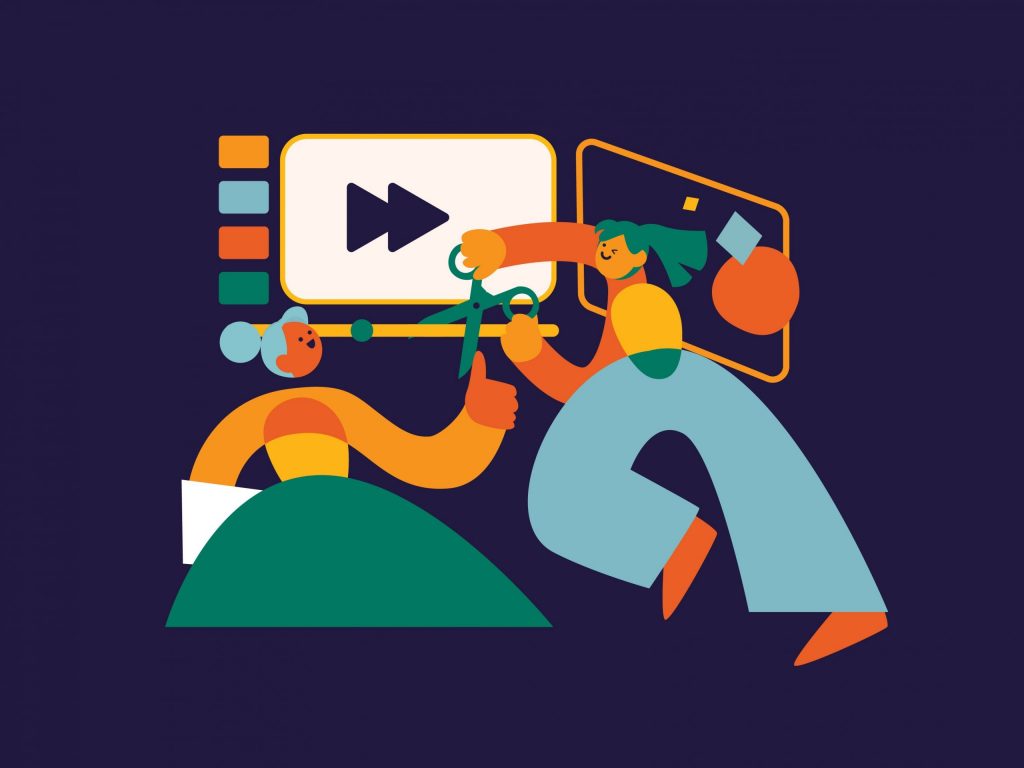
Recommend reading:
- How to create animation script for eLearning videos
- Which animation styles fit best to your eLearning videos?
3. Storyboards
Storyboards-photos of important scenes will be drawn out so that you can get a visual representation of key moments in the videos.
In this phase, you should concentrate on: Examining the style to see whether it meets your requirements.
Recommend reading:
4. Produce animation
After receiving the approved storyboards and concepts, the art team begins working on the magic. In this stage, features are combined to form an animation.
In this phase, you should concentrate on: You should check in with the team at each checkpoint to ensure that things are going as planned.
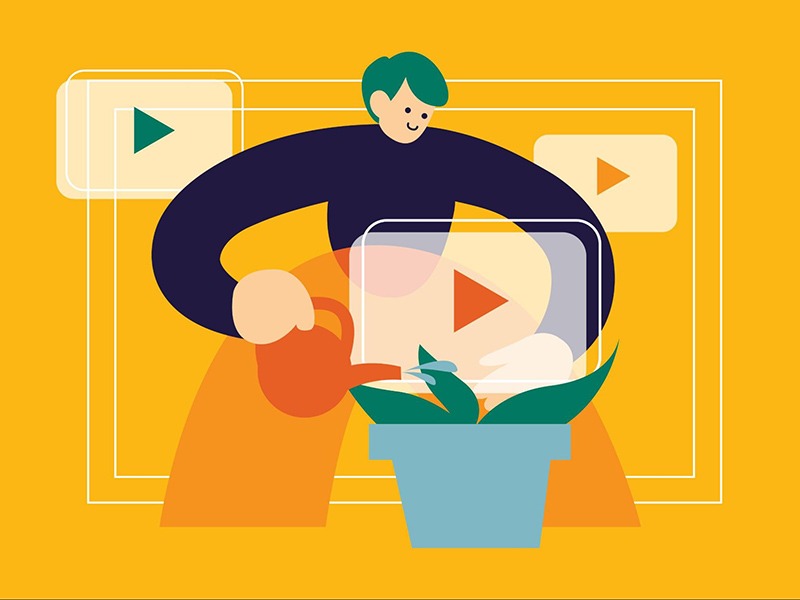
5. Add sound effects
After the video’s visuals have been completed, sound effects such as music and the narrator’s voice are added to help lead the viewers.
In this phase, you should concentrate on:
First, check to see if the sound effects match the motions.
Second, the pace and tone of the voice-over should be modified to accommodate the learning speed of the learners.
6. Review and send to customers
Before submitting the final version, studios will evaluate it and get feedback from clients. The team must ensure that the final output meets the expectations of the clients.
In this phase, you should concentrate on requesting that the studio fulfill the deadline and double-check that the video has been well-edited based on comments.
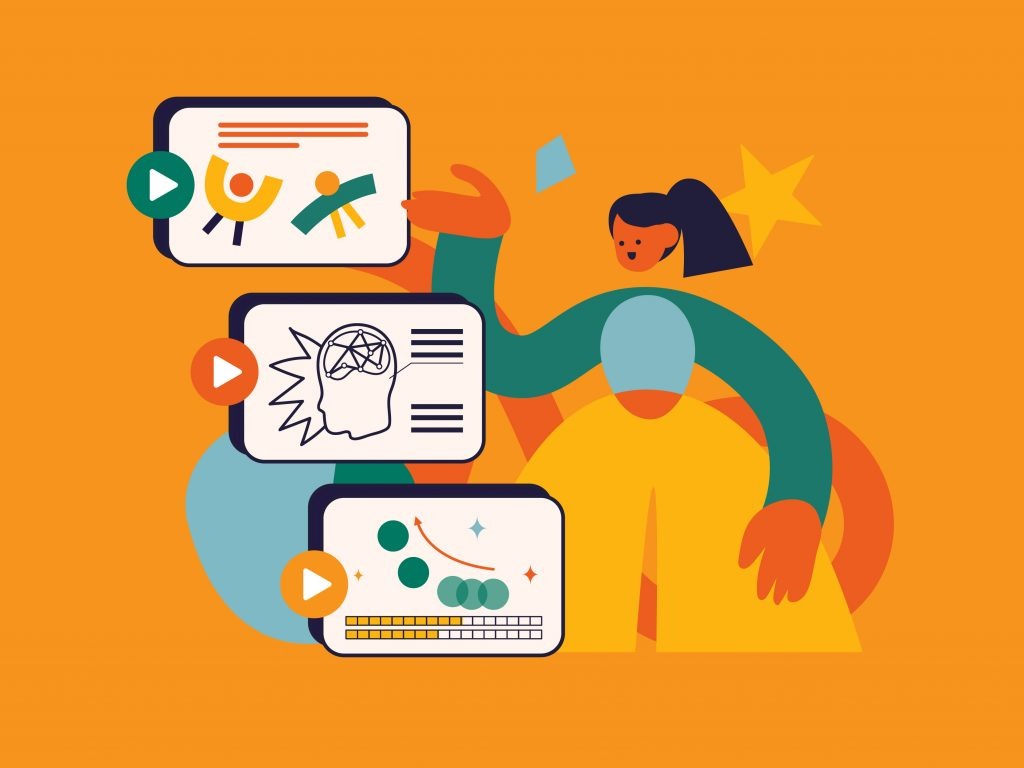
Recommend reading:
Conclusion
Going through the whole article, you have learned about three main types of educational animation. We hope that with our explanation, you have well understood which type is most suitable for the content you want to deliver. With the best examples of educational animation provided, you can have the standard and reference of how good animation looks like.
Yes, we know that things are easy to understand, but you might still be a little bit clueless. Don’t sweat! F. Learning team – one of the top eLearning companies – is always here to support you. Simply pick your phone up and contact us to get things done in the wink of an eye.
Read Further:
- How to use animation in eLearning
- Top Animated eLearning Video Company (2024 Update)
- How much does an educational animation cost per minute: $100, $1,000 or $8,000?
Quick Guide: All you need to know before starting your animation project
Optimize your animation budget? Sure. But there are much more. All you need to know are in this secret recipe, written by our seasoned account manager.

Sean Bui, the founder and creative director of F.Learning Studio, is a respected leader in the e-learning and multimedia production industry. With over 10 years of experience, he has dedicated his career to helping organizations create engaging and impactful learning experiences.
Under his leadership, F.Learning Studio has grown into a trusted partner for organizations in the education, healthcare, and corporate training sectors, producing over 2,000 minutes of educational animation.

